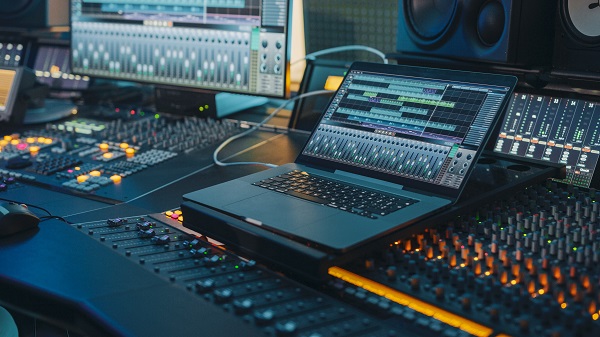
Music artists are no longer dependent on studio giants to produce music. They can set up a music studio right from the comfort of their homes, which is good news, especially to those who are just starting out.
Are you itching to establish your own home music studio? Get these seven key pieces for a successful home studio setup:
- A handy pop filter
Ever wonder what the circular, net-like thing that’s placed in between a recording artist’s mouth and a microphone is? It’s called a pop filter, and it exists to allow for easier editing of the recording, which usually leads to a better result.
A pop filter’s main purpose is allowing for easier editing of unwanted sounds, such as the popping sounds generated by fast moving air. It also helps to reduce the annoying sounds of plosives (from speaking words with the vowels “P” and “B”) and the hissing sound when a person speaks words with an “S”.
A pop filter also helps to keep the mic dry, preserving its quality and helps extend its shelf life. If you don’t know where to buy one, here’s how to make a pop filter.
- A reliable computer
Your computer is the centerpiece of your recording studio, and should be equipped with enough processing power to fulfill your recording needs via recording software, typically called the digital audio workstation (DAW).
A laptop or PC with at least 8GB of RAM running on a Core i5 processor would be the minimum requirement for your home music studio. If you’re unsure of whether to use a laptop or a desktop computer, consider the former if you’re planning to make music on the go. The latter works great if you plan to have a fixed recording studio, or need a higher-powered core processing unit (CPU) to produce larger scores or music.
- A good audio interface
To turn an analog input or sound from your vocals, guitars, and other musical instruments into a digital signal, you need an audio interface. An audio interface focuses the distribution of audio from external sources into your computer, and vice versa.
As a rule of thumb, the best audio interface will allow you to obtain high-quality audio in and out of your computer, and to connect some vital studio gear during your sessions. Plug in everything from microphones to electric guitars, including other instruments. An audio interface can accommodate your musical instrument digital interface (MIDI packs) equipment, studio monitors, and studio headphones too.
- A high-performing studio microphone
Microphones typically fall into two categories: dynamic mics and condenser mics. The former are used for on-stage singing because they’re ideal for roughhousing, and are seen as more resilient. Condenser types, on the other hand, are more delicate and sensitive, and are generally seen as better for studio recording use.
- Top-quality headphones
You have to hear what you’re recording, and headphones make this possible. When recording tracks and music in your home or in the studio, you ought to have the best-quality pair of headphones, for maximum sound isolation. You’ll need this, for instance, when determining the best settings for recording your acoustic guitar. A good pair can block out the actual sound of your guitar, so that you only hear the recording.
- Monitor speakers
Monitor speakers work to ensure that the audio signal is reproduced correctly by preventing the artificial enhancement of bass, treble or other frequencies in an attempt to make the speaker sound “better”. This piece of equipment also helps to avoid resonance from the speaker and cabinet. In running your home recording studio, you’ll hear what you’re mixing and have total control over the sound.
- Bass traps, acoustic panels and diffusers
Installing proper acoustics in your home is one of the fastest ways to turn your recording studio from good to great. You can have the best microphone in the world, and indeed, it’ll save you from having crappy audio recordings in a poorly-controlled environment. A room properly treated with acoustics can dramatically improve the sound quality that your microphone picks up.
The Final Cut
Setting up a basic home music studio can cause a dent in your budget, but you don’t have to spend a fortune to get things started. If you want to chase your dreams and make it in the music industry, arm yourself with tons of patience and grit, and never get tired of learning new things.
Before buying your basic home studio recording gear, choose the place in your house where you feel most comfortable. Look for the spot where you can have all the freedom to think and record, as well as the space to fit most of the equipment you’re going to need.





